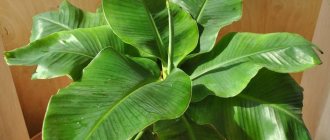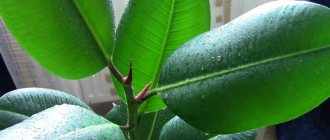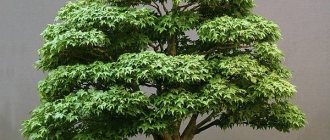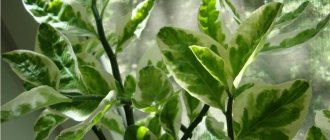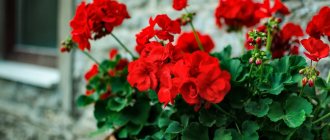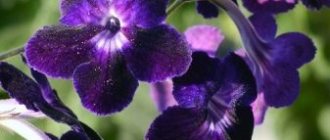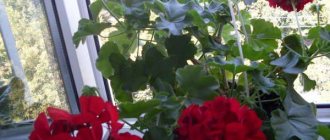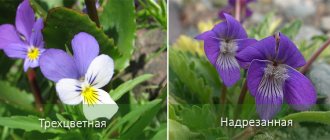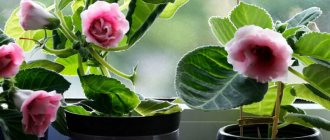Seed selection
It will take a lot of effort to grow a blue maple bonsai. But having received the azure miracle, everyone will forget about the time spent.
Selecting seeds of excellent quality is important. They are purchased in special flower shops, or you can order them online to China.
How to prepare seeds?
To grow a charming blue maple bonsai at home from seeds, you need to stratify them. Under natural conditions, maples emit seeds in the fall; they go through the same process in 120 days.
At home you will need to:
Stage I. Cold stratification – seed ripening. They are left in warm water, then they must be stored in the refrigerator or freezer. This is an imitation of temperature changes. And refrigerators and freezers in Almaty can be purchased in the TOP TECHNO online store.
Stage II. Warm stratification for maple seeds is an “awakening”. To do this, they are kept in moisture (substrate or soft tissue) for several days, always at +30-35o C.
For maple, a combined method is used, where the seeds are first kept in a cold place, and before planting, they are dipped in warm water.
Important! Be sure to disinfect the seeds with a mixture of weak potassium permanganate for up to 15 minutes. to prevent the occurrence of fungi.
Propagation of maple for bonsai
All types of this plant are easily propagated by cuttings and rooted layering. Seeds, which should be stratified before sowing, are also suitable for growing maple bonsai.
To do this, the seed is dropped into damp sphagnum, sand or peat, after which the container with the seeds is sent to the refrigerator. To prepare palm maple seeds, for example, 3–4 months in the vegetable compartment is sufficient. When warmed, the shell will certainly open, and friendly shoots will appear.
Hatched maple seeds for bonsai are transferred to a sand-peat mixture or planted in well-moistened peat tablets. In a greenhouse in the light, but not in the direct rays of the sun, the plant produces a pair of true leaves within a month.
When their number reaches 4-5, it is time to transfer the young maples into their own pots and begin forming a bonsai.
Soil preparation
To grow Japanese maple, it is important to choose the right container and prepare the soil.
Substrate called Akagama (natural soil in the 1st prefecture of Japan). Composition: humus, coarse sand and alumina (1x1x1).
This substrate for barefoot maple:
- excellent moisture retention;
- light and loose for free access of air, as well as protection of roots from rotting;
- the soil must have sufficient nutrition.
For blue maple (and deciduous plants) it is better to prepare: sand in combination with turf (3x7).
- coarse sand from the river;
- clean the soil by sifting through a coarse sieve;
- the resulting mixture is disinfected - treated thermally: it can be heated in a frying pan (water bath). You can freeze the substrate and then thaw it, this is also an excellent disinfection. Then be sure to dry the soil well and pass it through a sieve once.
Advice! You can disinfect the soil with biological products “Barrier” or “Fitosporin”; they will destroy possible eggs of various insects or fungal spores.
- Plot near a pond: nuances of choice
- Which fast-growing shrubs are suitable for green fences?
- Juniper stricta - description, cultivation, planting and care. Secrets of garden maintenance and application in landscape design (130 photos and videos)
The disinfected soil is fertilized. Seeds are planted in a shallow (up to 5 cm) and wide container with 3-4 drainage holes.
Before use, wash the container well with a non-aggressive agent. It is better to scald with boiling water to destroy fungal spores and dangerous bacteria, then let it dry.
Room care
The procedure should include the following points:
- thorough watering from spring to late autumn;
- in winter, it is better to reduce the moisture content of the plant in a pot by half;
- it is allowed to fertilize the tree with complex preparations;
- Every two years, replant the plant in a larger container.
You have become acquainted with outdoor and indoor Japanese maple. Now you can grow a decorative ornament in your garden that you can care for according to all the recommendations.
Kingdom: Division: Class: Order: Family: Genus: Species:
A brief description of.
Maple Japanese – a deciduous tree 7-10 m high, with an openwork crown, dark red one-year-old shoots and almost round 7-11-lobed leaves. Blooms in June.
Spreading.
Japanese maple is a very rare species; in Russia it is known only from two locations in the south of Kunashir Island, South Kuril region, Sakhalin region. Found scattered along the stream. Border and in the district of the river. Dark, gravitating towards the Sea of Okhotsk, warmer and sunny side of the island (1, 2). The main part of its range is located in Japan (Hokkaido and Honshu islands), where the species occurs both in natural conditions and is widely cultivated (3).
Number.
The approximate population size is about a dozen individuals. State of local populations. The population is extremely small. Seed regeneration was not observed on Kunashir Island, however, in October 1999, one fruiting plant was discovered.
Limiting factors
A small number of individuals in a population. Lack of seed regeneration (4). Security measures taken. Was included in (1988). The species is listed in the Red Book of the Sakhalin Region. (2005). Protected in the Kurilsky Nature Reserve.
Necessary security measures.
Search for new locations of the species and counting the size of the island population. Monitoring the state of the species population. Cultivation possibilities. Cultivated in botanical gardens of Russia: Moscow (GBS RAS, MGUDSHA), Samara, St. Petersburg (GLTA), Selivanovo (b). Due to its decorative properties (large purple flowers and beautiful foliage), it deserves wider introduction into green building (4), including in the south of the Russian Far East.
Information sources.
Red Book of the Russian Federation. 1. Alekseeva, 1983; 2. Data from N.A. Eremenko; 3. Nedoluzhko, 1987; 4. Kharkevich, 1988; 5. Barkalov, Eremenko, 2003; b. Plants of the Red Book..., 2005. Compiled by: V.Yu. Barkalov, N.A. Eremenko. Red Book of the Russian Federation (and mushrooms)
The Land of the Rising Sun gave the world Japanese maples, incredible in their diversity and beauty. Once you see them, you will certainly want to complement the garden picture with a watercolor touch of exquisite oriental beauty. Moreover, planting and caring for maple will not cause much trouble.
How to plant seeds?
Place a fine mesh at the bottom of the prepared container so that the soil does not spill out. We fill it with a large substrate, then with a small one. Leave about 3 cm to the top edges.
Place blue maple seeds on the soil at a distance of 1 cm. Each seed needs to be slightly pressed down with a round wooden board, sprinkled with a thin layer of sand or soil on top, and compacted.
Then the soil needs to be watered a little. Cover the container with transparent glass (film), place it in partial shade, and wait for the first shoots to appear.
- How to grow a plum from a seed: tips and tricks on how to prepare the soil, prepare fertilizers and grow plums at home (155 photos + video)
- Do-it-yourself columnar foundation for a gazebo: instructions, diagrams, calculations
- How to choose the right fruit trees and shrubs for planting
It is necessary to maintain soil moisture, as well as a temperature of +15o C (not lower).
With the appearance of sprouts, you need to move the glass, if there is a film, cut small holes for oxygen to enter.
Caring for Blue Maple
The sprouts will do well in partial shade. Fertilize the soil once a month.
- Do-it-yourself disassembly of the Grundfos pump
- Where and from whom is it better to buy seedlings?
- Cherry cherry: 100 photos, description of the variety, features of planting and cultivation. Care, planting and replanting of cherries
When they reach 10 cm, they need to be replanted separately. Bonsai containers are best made of ceramics.
The shape of the container depends on the style of bonsai:
- the cascading crown requires a tall and narrow pot;
- sloped crown – wide for good stability;
- dense crown – flat;
- small bonsai height – deep, compact.
Important! The main requirement in a bonsai container is stability.
The color of the cookware is better than calm tones to highlight the brightness of the maple.
What type of maple is suitable?
Bonsai is a plant species common in Japanese culture. The process of creating such a home specimen includes, first of all, pruning the crown, that is, its correct formation, as well as working with the root system of the greenery. Florists practice growing bonsai trees from various trees (pine, sakura, lemon, bamboo).
However, among all these specimens, the maple bonsai will definitely stand out. If previous plants retain the greenness of their leaves throughout the growing season (sakura is covered with bright flowers), then the maple is notable for the fact that its foliage acquires bright, variegated shades. Plant such a specimen in your home, and no one will pass by this aesthetic decoration.
In order to achieve the desired result in the process of cultivating a maple bonsai tree, it is necessary to understand which plant varieties can be used for this purpose. Experienced flower growers recommend leaning towards the following types of maple:
- rocky;
- field;
- ash leaf;
- palmate;
- platanofolia.
It is better to choose from these specimens, since their dwarf plants form small leaves that will look harmonious as a bonsai composition.
Interestingly, the modern art of creating such indoor masterpieces is constantly developing. If you want to add a homemade miniature maple to your flower collection, you can safely purchase its color variations: blue bonsai maple, Japanese red (Atropurpureum), purple. Such maple compositions will not leave anyone indifferent.
Watering
High humidity at low temperatures can lead to fungal diseases.
A small container will distort the plant's roots.
Abundant watering, preferably from a kettle. You can immerse the pot in a wide container of water for a short time.
Rainwater for irrigation is desirable. You can use flow-through, but let it sit for 2 days.
Features of growing maple bonsai
Although this tree looks miniature, it has nothing to do with house plants. Prefers to grow in the wild, along with its tall brothers. The main condition for its successful development is the presence of a sufficient amount of sunlight. With this in mind, it is necessary to select a place in the garden for the Japanese maple. It is in the morning hours that he should receive his due portion of the sun's rays.
During hot summers, the tree must be protected from the scorching rays of the sun. When exposed to strong heat, the leaves of the tree change color and turn brown. But the negative impact doesn't end there. Severely dried leaves will begin to fall off. Another enemy of the Japanese red maple is strong winds, which also have a detrimental effect on the condition of the leaves.
These trees are afraid of very low temperatures, since their root system is located a short distance from ground level, so there is a threat of freezing. When the temperature drops below 5 degrees, the plant may slow down or stop its development.
Watering should be treated with caution. Incorrect actions can lead to the death of the red maple. Moreover, you can only use slightly acidic or neutral water.
To create a bonsai, you need to trim the crown correctly. First of all, they get rid of new shoots and small branches. Old branches are pruned in late autumn or midsummer, when the plant can independently “heal” the resulting wound with callus. You should not prune in the spring. This will result in excessive loss of juice.
How to properly form a tree crown
Bonsai cannot be grown without pruning. This action should begin when up to 5 pairs of leaves appear on the branch. As a rule, shortening occurs by a couple of leaves, while large leaf blades are plucked out separately, after which cuttings remain. After a short time, these cuttings wither and fall off, and large leaves will give way to smaller ones, which look beautiful on a bonsai.
In July, a healthy tree should be defoliated and the growth buds plucked out, which can cause:
- slow growth;
- formation of short shoots;
- increasing crown density.
As for red Japanese maples, such an operation is contraindicated for them, as it can greatly weaken the plant.
The best way to grow red maple in the garden
If the climatic conditions where you live are quite cold, then you can grow Japanese maple in tubs so that it can overwinter at home. The tub is very convenient for growing due to the fact that it is quite mobile and can be installed anywhere. If there is bright sun, the tub can be placed in the shade or hidden under a canopy from heavy rain or hail.
In Japan, such tubs are installed on pedestals so that these miniature beautiful trees can be better seen. Japanese red maple goes well with ornamental shrubs, other trees, ornamental grasses and various flowers. This plant will decorate any pond, park, stone garden, front garden and any other place where you can relax. This dwarf tree harmonizes perfectly with asters, chrysanthemums, and oaks. Juniper, boxwood and decorative coniferous bushes will be excellent neighbors for red maple.
Pest Control
If a maple tree grows at home, it can be affected by some diseases and pests, such as mealybugs, aphids, spider mites, and scale insects. This may be the result of improper plant care or the presence of infected indoor plants in the immediate vicinity. To eliminate these diseases, it is necessary to treat the tree with broad-spectrum insecticides. If spots or powdery mildew appear on the leaves, the plant must be treated with Bordeaux mixture. You can also use a solution of colloidal sulfur or copper oxychloride.
Top dressing
Feeding is needed once every 20 days:
- with nitrogen for good growth;
- with phosphorus for root development, increased immunity, and bud formation;
- with potassium to protect against pests.
The plant needs iron to feed it, so a clay substrate is ideal. In the room, the maple tree needs to be fertilized all year round.
Crown formation
When the seedling is 2-3 months old, the central root should be shortened by 2/3.
Form the bonsai crown by pruning all year round. Small or weak branches can be pruned at any time. It is better to trim thick branches only in autumn. This will reduce the growth of the bonsai.
In spring, the movement of juices inside the tree begins. Before the onset of winter, the shoot must be cut to the nearest branch.
Sections must be treated for infections. Only in the 4th year, unnecessary branches are pruned to form the crown.
Replant blue maple every year in the spring, changing the soil and container. Be sure to trim the roots and remove damaged ones.
By following these rules, everyone can grow a Japanese maple of extraordinary blue at home. A miniature maple bonsai will become the pride and decoration of any home.
Conditions for growing maple bonsai
Maples feel good in central Russia, but in the form of bonsai this tree suffers more from external influences and needs to carefully choose a place of residence.
The most common maples in bonsai, palmate and fan maples, can become sick and experience growth difficulties:
- under direct sunlight, especially in the southern regions;
- in the wind or drafts;
- in dense shade.
However, if we are talking about a choice between light and shadow, it is better to expose the pot to the sun, which in the central part of the country will not cause serious harm. In the sun, the tree produces smaller leaves, which eliminates the need to remove buds and does not weaken the plant. In addition, the colors of foliage in full sun are brighter and more attractive.
If in the summer, as in the photo, a maple bonsai is taken out into the open air, it must be protected from the wind, otherwise a plant with a trimmed root system risks losing its balance and falling out of the shallow pot.
Maples, both in nature and at home at low temperatures, do not tolerate excessive air humidity and insufficient flow of fresh air. Under such conditions, bonsai are affected by harmful fungi that cause powdery mildew and anthracnose.
Watering is a mandatory and very important part of caring for a maple bonsai. In summer, the intensity and frequency are increased, and if necessary, careful sprinkling is used. In winter, when the leaves fall and the plant goes into hibernation, the need for moisture drops sharply.
In the spring, when the maple awakens, it is fed, and the presence of iron in the mixture is important for the maple. This is also taken into account when preparing the substrate. The soil for maple bonsai should be nutritious, aerated, with a neutral or slightly acidic reaction. In addition to traditional components, a clay substrate for bonsai is added to the soil, which provides anchorage for the root system and structures the earth mixture.
Replanting and replacing the container when growing maple bonsai coincides with pruning the roots, which is carried out every 2-3 years. In parallel with the formation, dead or damaged rhizomes and lumps of adhering soil are removed.

